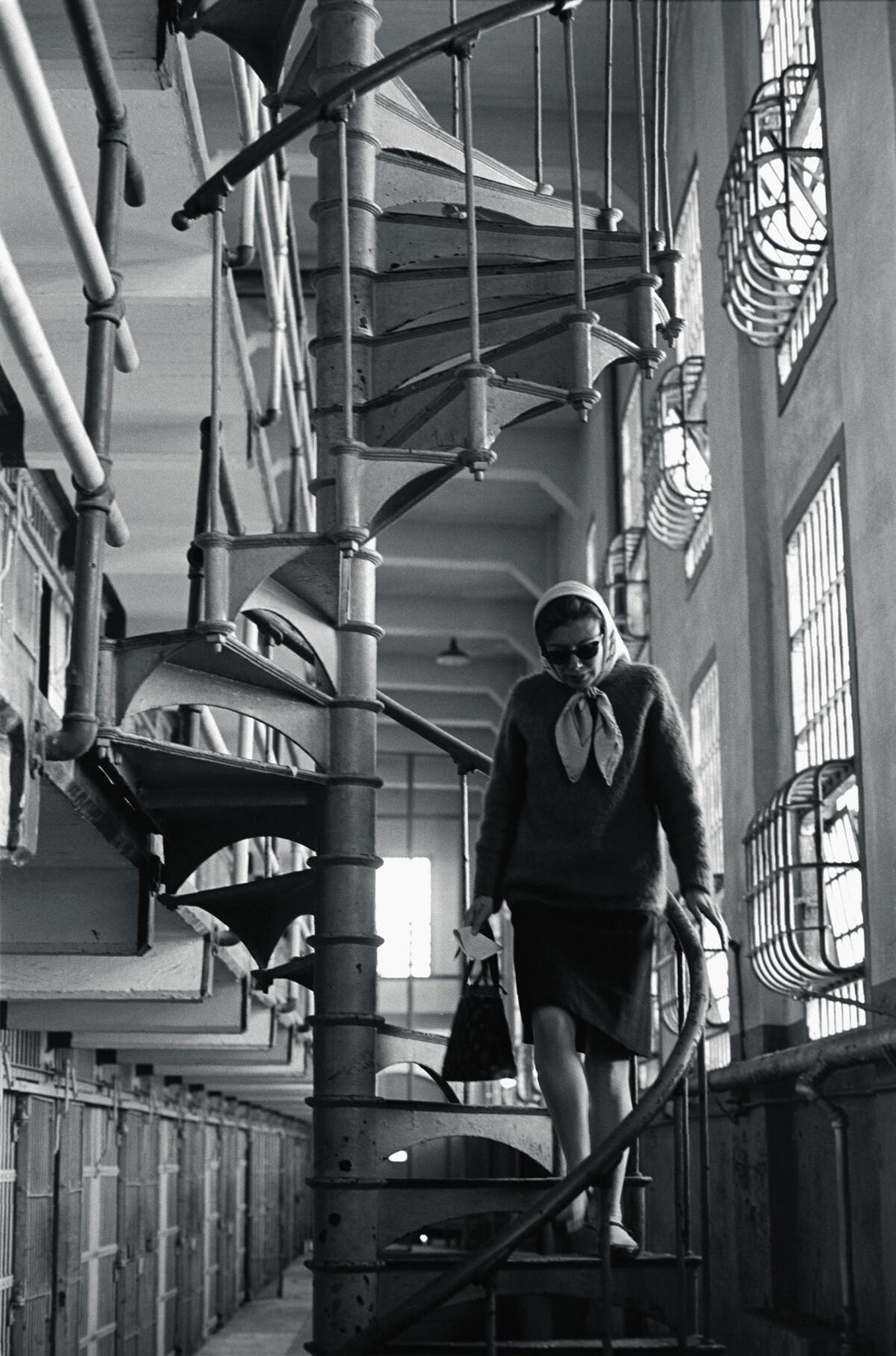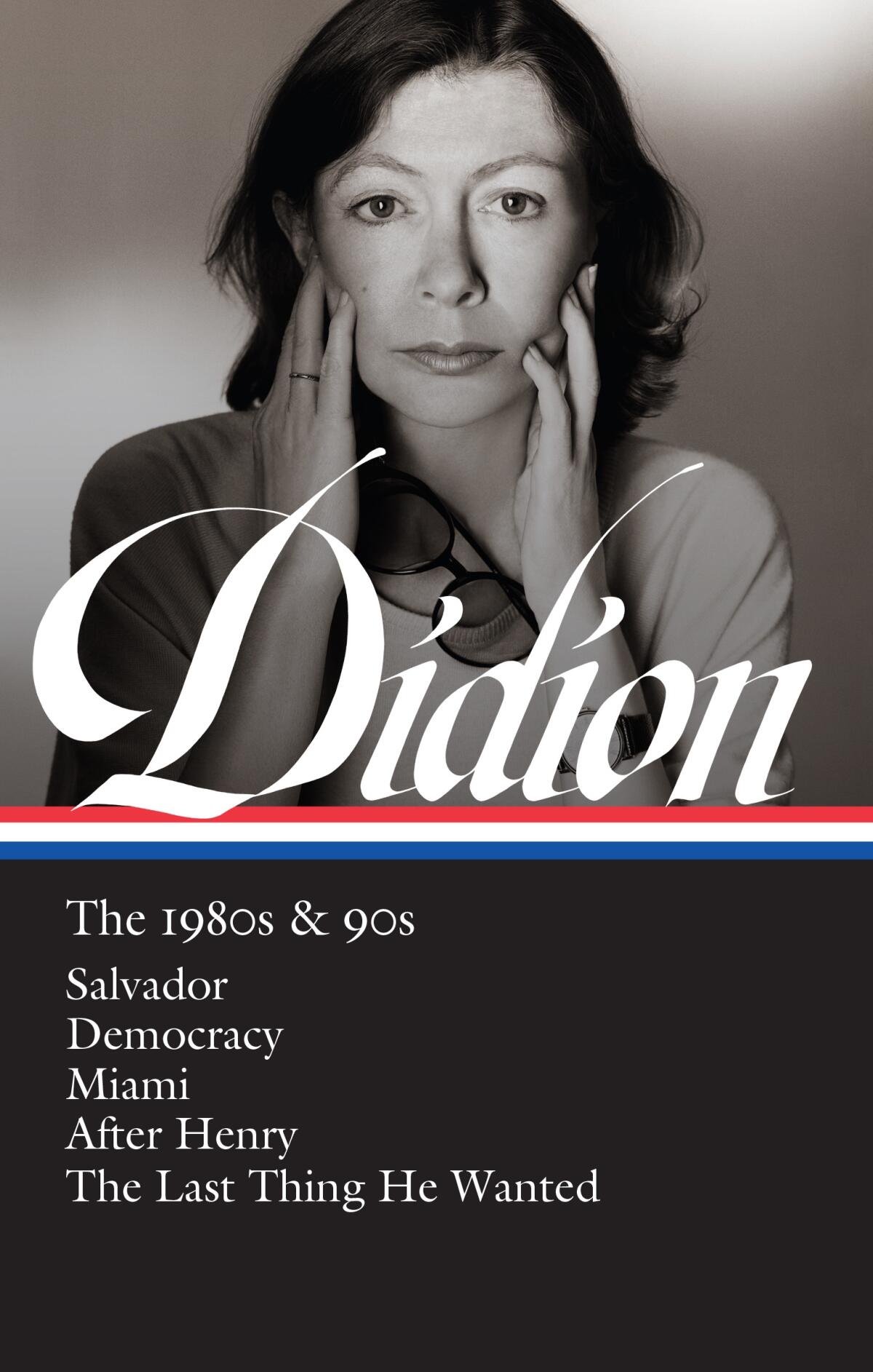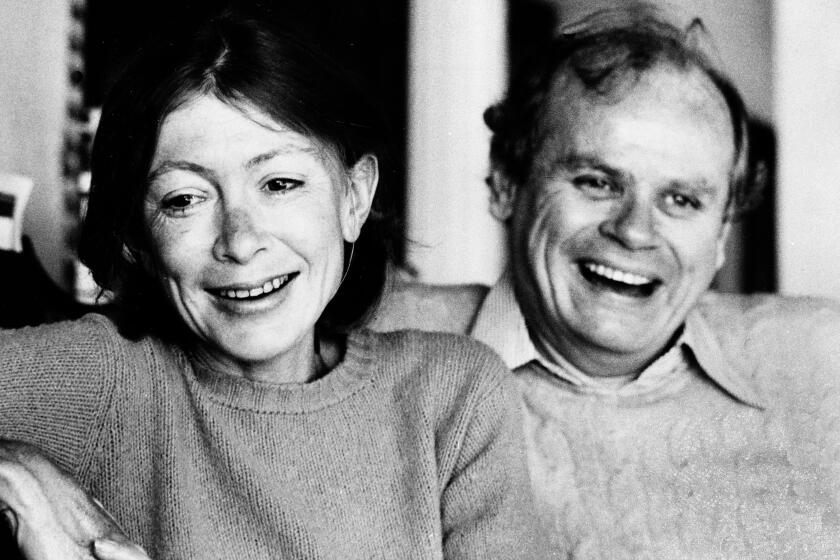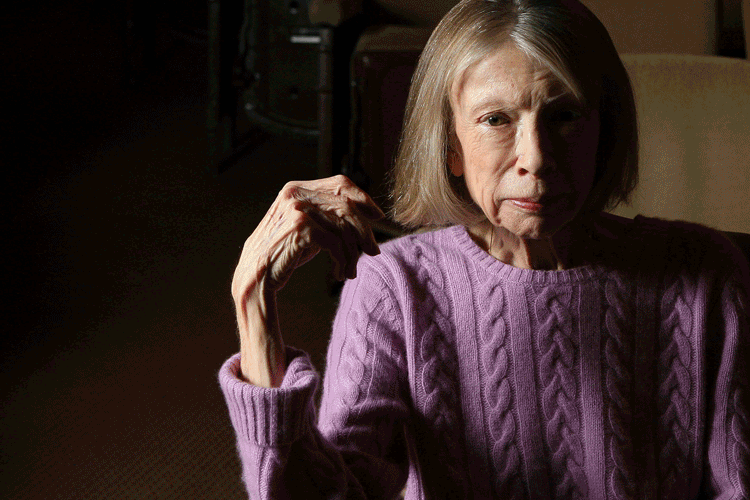Appreciation: Like the rest of us, Joan Didion didn’t have a plan. Why that made her great

Joan Didion was a working writer. What I mean is that, as much as writing was for her about art and nuance, it was also very much a job. This came up when I interviewed her for The Times in August 2011 at her apartment on the Upper East Side of Manhattan. She was about to publish “Blue Nights,” a memoir rooted in the death of her daughter, Quintana, and her own concerns about diminishing as an artist and a human being. It would be her last book of new writing — she’d put out “South and West” in 2017 and “Let Me Tell You What I Mean” in 2021, both gathering previously uncollected work — and she had misgivings, mostly about appropriating a story, Quintana’s, that she felt might not be hers to tell.
“There came a time,” she acknowledged, “when I decided I would simply repay the money I had gotten from Knopf. I told [the agent] Lynn Nesbit that this was my plan, that I was going to tell Sonny [Mehta, Knopf’s publisher] I couldn’t do it, and we would repay him. And Lynn said, ‘Why don’t you wait on that a while?’”
This is one of my favorite stories about Didion, who died on Dec. 23 at the age of 87 in that same apartment, from complications of Parkinson’s disease. It echoes her description of herself as a “public writer,” which is to say one who writes to publish. It’s a posture that I take as an article of faith — the necessity not just to tell the story but also to share it. The necessity, in other words, to do the job.
For Didion, that extended to the ephemera of publishing: the book tours and the publicity, the appearances and interviews. “Maintaining momentum,” she called it, as if working helped create a structure to navigate the world. This was the impetus for “The Year of Magical Thinking,” the 2005 book about the death of her husband, John Gregory Dunne, which won a National Book Award and — for better and for worse — changed our perception of Didion from reporter to memoirist. The book was written first and foremost as a gesture of survival, a transcription of the bitter experience of grief.
“It was a huge part of that year,” she told me. “I’m not sure I could have gotten through it if I hadn’t done something so odd.” And yet, even here, part of the process involved going public. To release the work was an act of commitment, obligation even, as much as one of grace.
Joan Didion, who died Thursday, left a seismic impact on the literary world and her home state of California.
Didion operated as a freelancer from the earliest days of her career. After a stint at Vogue — where, writing captions and promotional copy, she learned, as she recalls in the essay “Telling Stories,” “a way of regarding words … as tools, toys, weapons to be deployed strategically on a page” — she contributed to Mademoiselle and the National Review. She published her first novel, “Run River,” in 1963, and afterward (along with Dunne) she became a hired gun, producing fiction and screenplays and reportage. In 1967, the couple began a shared column for the Saturday Evening Post called “Points West”; a selection appears in “Let Me Tell You What I Mean.”
As for why she contributed to such a middle-brow publication, Didion once explained that the Post paid well and gave her space. What more could a writer need? There, she began to develop the longer essays that would come to define her. These include “Some Dreamers of the Golden Dream,” her riveting account of a San Bernardino murder trial, and “Slouching Towards Bethlehem,” which uses an elliptical and fragmentary structure to explicate, as precisely as anything I know, the conflicts and contradictions of the 1960s counterculture.

It makes sense that we should now consider this work monumental, that we should take it for granted as literature. Still, for all its artistry, everything it tells us not only about California but also about the existential condition of living, I can’t help seeing it through another lens. During the late 1960s, even as Didion and Dunne were alternating month to month on “Points West,” they were hustling film projects. In 1968, the couple, along with Dunne’s brother Dominick, acquired the rights to James Mills’ “The Panic in Needle Park”; it became their first produced script.
The year before, Didion had signed a two-book deal, for a nonfiction book “about the LSD life in California” and a novel called “Maria Talking.” For each one, she received a $6,000 advance. The novel appeared in 1970 as “Play It As It Lays.” The LSD book, which was to have been expanded from her counterculture piece, never materialized. Instead, the essay became the centerpiece of “Slouching Towards Bethlehem.”
Joan Didion writes through ‘Blue Nights’
What this suggests is that even the most apparently intentional career is a matter of serendipity. We get ideas and they stick, or they do not. “You never get the book you wanted,” James Baldwin once observed, “you settle for the book you get.” We set out to write something and end up with something else.
For Didion, this played out more than once over the course of her writing life. In 1970, a project about Linda Kasabian, the Charles Manson acolyte who turned state’s evidence, failed to come together; fragments would emerge in “The White Album.” Five years later, an assignment to report on the Patty Hearst trial for Rolling Stone was left uncompleted, yielding only the 1983 essay “Girl of the Golden West” and some loose notes that were eventually published in “South and West.”
I want to be clear that I don’t think of this as failure, just the ebb and flow of the writer’s life. In that sense, Didion was like the rest of us. She was an individual, not an icon, with interests and fascinations and aspirations she could not always fulfill. She wrote, as all writers do, for the art and for the money, using the materials at her disposal as best she could. Sometimes I think of those ghost books — on LSD and Linda Kasabian and Patty Hearst — and wish I could read them, but in fact we already have the necessary parts. What else did she need to say about the 1960s that isn’t in “Slouching Towards Bethlehem” and “The White Album”? How do we improve on the magnificence of those books? Indeed, it is their elusive fragmentation that gives them their weight, their gravity, by evoking the author’s wary interaction with her times.
Like every successful writer, Didion knew how to cut her losses. She knew how to make the most of what she had. Her career only appears inevitable in hindsight. In the moment, she pursued the only option available: to do the job.
Ulin is the former book editor and book critic of The Times. He is the editor of “Joan Didion: The 1960s and 70s” and “Joan Didion: The 1980s and 90s” from Library of America.
Didion bridged the world of Hollywood, journalism and literature in a career that arced most brilliantly in the realms of social criticism and memoir.
More to Read
Sign up for our Book Club newsletter
Get the latest news, events and more from the Los Angeles Times Book Club, and help us get L.A. reading and talking.
You may occasionally receive promotional content from the Los Angeles Times.









